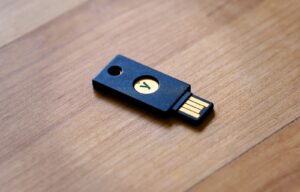Gaining Real-Time Insights into Emerging Threats
The Importance of Threat Intelligence in IoT Security
One of the most effective strategies for protecting IoT ecosystems is leveraging threat intelligence for IoT security assessments. By incorporating real-time data on emerging threats, organizations can proactively defend against potential cyberattacks, ensuring the integrity and safety of their IoT devices and networks.
Threat intelligence involves the collection and analysis of data related to current and potential threats, providing organizations with actionable insights. For business executives in Riyadh and Dubai, utilizing threat intelligence during IoT security assessments enables them to stay ahead of cybercriminals, adapting their defenses to meet the latest challenges. This approach not only strengthens the security of their IoT networks but also enhances the overall resilience of their operations.
The dynamic nature of cyber threats makes threat intelligence a critical component of any comprehensive IoT security strategy. As IoT devices become increasingly interconnected, the attack surface expands, making it essential to have up-to-date information on potential vulnerabilities. By leveraging threat intelligence, organizations can identify and mitigate risks before they are exploited, ensuring the continued security of their IoT deployments in critical sectors such as finance, healthcare, and smart city initiatives.
Reliable Sources of Threat Intelligence for IoT Security
To effectively utilize threat intelligence for IoT security assessments, organizations must rely on trustworthy sources that provide accurate and timely information. One of the most reliable sources is government cybersecurity agencies, which often share threat intelligence with the public and private sectors. For instance, the Saudi National Cybersecurity Authority (NCA) and the UAE’s Telecommunications and Digital Government Regulatory Authority (TDRA) provide valuable resources and updates on emerging cyber threats. These agencies offer insights into region-specific threats, making them particularly relevant for businesses operating in Riyadh and Dubai.
Another crucial source of threat intelligence is industry-specific Information Sharing and Analysis Centers (ISACs). ISACs are collaborative groups that collect, analyze, and disseminate threat intelligence within specific industries. For example, the Financial Services ISAC (FS-ISAC) provides threat intelligence tailored to the financial sector, helping banks and financial institutions in the UAE and Saudi Arabia protect their IoT-connected systems. By participating in ISACs, organizations can access a wealth of industry-specific data, enabling them to tailor their IoT security assessments to the unique challenges of their sector.
Private cybersecurity firms also play a significant role in providing threat intelligence. Companies such as CrowdStrike, FireEye, and Palo Alto Networks offer threat intelligence services that include real-time alerts, detailed reports, and advanced analytics. These firms often have access to a global network of data, allowing them to identify and analyze threats that may not yet be widely recognized. For mid-level managers and project management professionals, partnering with these firms can enhance their organization’s ability to detect and respond to IoT-related threats, ensuring a proactive security posture.
Best Practices for Integrating Threat Intelligence into IoT Security
Effectively leveraging threat intelligence for IoT security assessments requires a strategic approach that integrates this data into the organization’s overall security framework. One of the best practices is to establish a dedicated threat intelligence team or function within the organization. This team should be responsible for continuously monitoring threat intelligence sources, analyzing the data, and providing actionable insights to the security operations team. By having a specialized team focused on threat intelligence, organizations can ensure that they are always informed of the latest threats and can quickly adapt their defenses.
Another essential practice is to automate the collection and analysis of threat intelligence. Given the volume and complexity of data involved, manual processes can be inefficient and prone to errors. Implementing automated tools and platforms that aggregate threat intelligence from multiple sources and apply machine learning algorithms for analysis can significantly enhance the organization’s ability to identify and respond to threats in real time. For example, using a Security Information and Event Management (SIEM) system integrated with threat intelligence feeds can help businesses in Riyadh and Dubai streamline their security assessments and improve their overall response time.
Finally, organizations should regularly update and refine their IoT security policies and procedures based on the insights gained from threat intelligence. Threat landscapes are constantly evolving, and static security measures can quickly become outdated. By continuously incorporating the latest threat intelligence into their security frameworks, organizations can ensure that their IoT defenses remain robust and effective. This proactive approach is particularly important in sectors like healthcare and finance, where the consequences of a security breach can be severe.
Conclusion
In conclusion, leveraging threat intelligence for IoT security assessments is an essential strategy for organizations looking to protect their IoT networks from emerging threats. By utilizing reliable sources of threat intelligence, such as government agencies, ISACs, and private cybersecurity firms, businesses in Riyadh, Dubai, and beyond can gain valuable insights into potential vulnerabilities and adapt their defenses accordingly. Integrating threat intelligence into the overall security strategy, automating data analysis, and continuously updating security policies are key practices for maintaining a secure IoT environment. Emphasizing the importance of threat intelligence and fostering a proactive security culture will ensure that organizations can navigate the complex and ever-changing cyber threat landscape with confidence.
—
#IoT, #threatintelligence, #cybersecurity, #IoTsecurity, #businesssuccess, #moderntechnology, #AI, #blockchain, #metaverse, #SaudiArabia, #UAE, #Riyadh, #Dubai, #executivecoaching, #leadership, #projectmanagement













